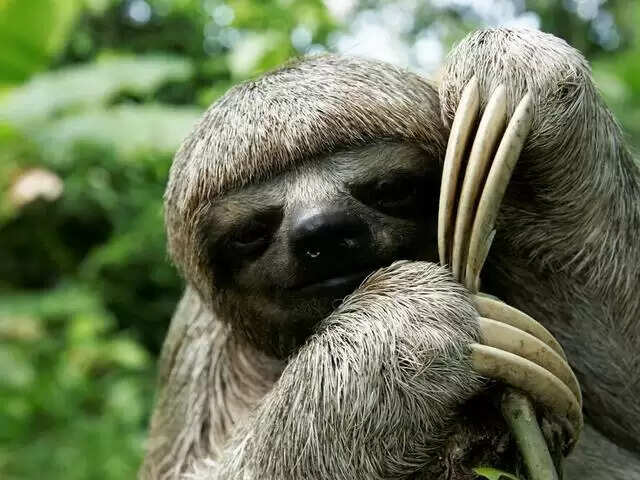Top 7 Slowest Animals In The World

Here are the top 7 slowest animals in the world.
1. Three-Toed Sloth:
Sloths inhabit treetops and move at a glacial pace due to their low metabolic rate. Their unique anatomical structure, with long arms and short shoulder blades, allows them to conserve energy while covering limited distances. They crawl at a sluggish speed of around 1 foot per minute, with algae growing on their coats due to their slow movement.

2. Garden Snail:
Equipped with a single foot, the common garden snail moves very slowly. It relies on a mucus stream to reduce friction as it inches along. The snail's top speed is merely 1/2 inch per second, often leaving a trail of slime behind.
3. Starfish:
Sea stars, or starfish, feature a hard top and numerous tube feet beneath for movement. Although possessing many tiny feet, they don't move swiftly. An adult sunflower sea star can manage a leisurely pace of about one meter per minute using its 15,000 tube feet.
4. Giant Tortoise:
The renowned Galapagos giant tortoise, studied by Charles Darwin, lives for over a century and is known for its gradual pace. While Darwin initially estimated their speed at 60 yards in 10 minutes, current research suggests they move at a maximum of two kilometers per hour, making them much slower than he believed.
5. Banana Slug:
The banana slug is considered one of the slowest animals, with observations showing it covering only 6.5 inches in 120 minutes. Its method of movement involves a muscular foot that secretes mucus, which transforms into slime upon absorbing water. This slime aids their crawling, and they even possess a mucus plug at the tail's end for rappelling purposes.
6. Slow Loris:
The slow loris exhibits a deliberate demeanor, except when hunting prey. During a hunt, it displays remarkable speed by striking rapidly. This primate's adorableness contrasts with its status as the sole venomous primate, using toxins from its mouth and elbow gland for defense.
7. Sea Anemone:
Similar to coral and jellyfish, sea anemones utilize mucus and their pedal disc to attach to various surfaces. Though typically stationary, they can move at an extremely slow pace of about 4/10-inch per hour, usually in response to threats or adverse conditions.

